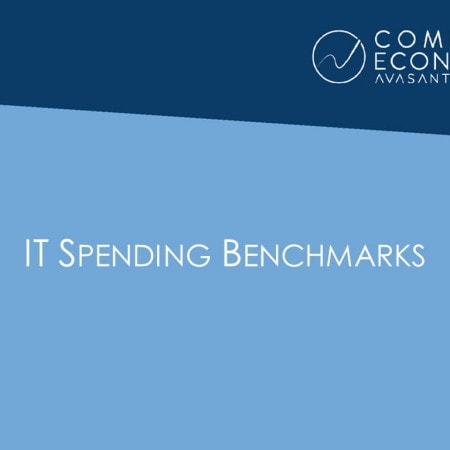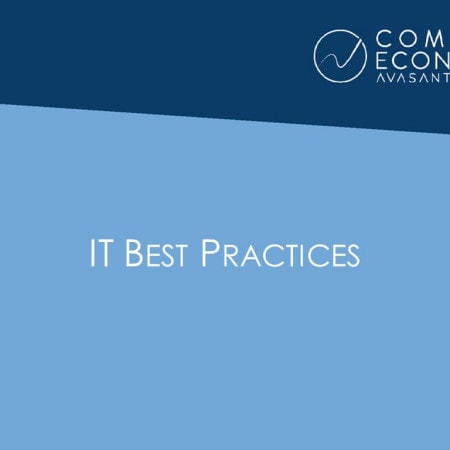-

Computing Power Trends by Platform and Organization Revenue TriMark – 1998 to 2000 (Feb 2001)
The Computing Power Trends by Platform and Organization Revenue TriMark shows changes in usage of various hardware platforms for the years from 1998 to 2000 by organization revenue. The types of platforms include mainframes ($1 million or more), midrange systems ($100,000 to $999,999), LAN servers/superservers, and PCs/workstations. The Computing Power Trends by Platform TriMark is designed to provide IT executives with a comparison of changes in computing power by platform for the last three years.
May, 2002
-

Computing Power Trends by Platform and Organization Revenue DeciMark – 1991 to 2000 (Feb 2001)
The Computing Power Trends by Platform and Organization Revenue DeciMark shows changes in usage of various hardware platforms for the years from 1991 to 2000 by organization revenue. The types of platforms include mainframes ($1 million or more), midrange systems ($100,000 to $999,999), LAN servers/superservers, and PCs/workstations. The Computing Power Trends by Platform DeciMark is designed to provide IT executives with a comparison of changes in computing power by platform for the decade.
May, 2002
-

Computing Power Trends by Platform and Sector DeciMark – 1991 to 2000 (Feb 2001)
The Computing Power Trends by Platform and Sector DeciMark shows changes in usage of various hardware platforms for the years from 1991 to 2000. The types of platforms include mainframes ($1 million or more), midrange systems ($100,000 to $999,999), LAN servers/superservers, and PCs/workstations. The Computing Power Trends by Platform DeciMark is designed to provide IT executives with a comparison of changes in computing power by platform for the last decade.
May, 2002
-

Use of Contractor/Temporary Personnel DeciMark – 1991 to 2000 (Feb 2001)
The Use of Contractor/Temporary Personnel DeciMark provides the lower quartile, median, and upper quartile of contractor and temporary staff compared to the total staff in the information systems department. The data is presented for each sector or by organization size. The lower quartile (25th percentile) presents the lowest 25 percent of contractor/temporary personnel used by all of the organizations, where 25 percent used less than that amount. The median (50th percentile) is the level at which half of the organizations used less and the remainder used more. The upper quartile (75th percentile) presents the highest 25 percent of contractor/temporary personnel used by all of the organizations, where 25 percent used more than that amount. Results are presented for the period of 1991 to 2000.
May, 2002
-

Computing Power Trends by Platform and Sector TriMark – 1998 to 2000 (Feb 2001)
The Computing Power Trends by Platform TriMark shows changes in usage of various hardware platforms for the years from 1998 to 2000. The types of platforms include mainframes ($1 million or more), midrange systems ($100,000 to $999,999), LAN servers/superservers, and PCs/workstations. The Computing Power Trends by Platform TriMark is designed to provide IT executives with a comparison of changes in computing power by platform for the last three years.
May, 2002
-

Technology Acquisition Plans for the Next 12 Months: Organizations Planning to Make Acquisitions TriMark – 1998 to 2000 (Feb 2001)
Technology Acquisition Plans for the Next 12 Months: Organizations Planning to Make Acquisitions TriMark shows the percentage of organizations that intend to acquire technology within the next year. For each technology listed, the remaining percentage of sites does not plan to acquire that technology this year. Information is broken down by sector or organization size. Technology areas included are mainframes, midrange systems, LAN servers/superservers, desktop PCs, workstations, storage systems, network hardware, network software, database software, application software, ERP software, and e-commerce software. Results are presented for the period of 1998 to 2000.
May, 2002
-

Technology Acquisition Plans for the Next 12 Months: Organizations That May Acquire TriMark – 1998 to 2000 (Feb 2001)
Technology Acquisition Plans for the Next 12 Months: Organizations That May Acquire TriMark shows the percentage of organizations that may acquire technology within the next year but are not absolutely certain that they will acquire. For each technology listed, the remaining percentage of sites does not plan to acquire that technology this year. Information is broken down by sector or organization size. Technology areas included are mainframes, midrange systems, LAN servers/superservers, desktop PCs, workstations, storage systems, network hardware, network software, database software, application software, ERP software, and e-commerce software. Results are presented for the period of 1998 to 2000.
May, 2002
-

E-Business Practices by Sector and Organization Revenue TriMark – 1998 to 2000 (Feb 2001)
E-Business Practices TriMark provides the percentage of respondents in our study that have or utilize various e-business capabilities. Results are shown for each sector or size of organization. The e-business capabilities include having a website, engaging in Web-based business-to-business or business-to-consumer transactions, achieving profits on those e-commerce efforts, and outsourcing website functions. Other capabilities include EDI via the Internet, EDI via direct dial connections with suppliers, and EDI via direct dial connections with consumers. The following tables show data by industry sector and organization revenue. The TriMark results are presented for the period of 1998 to 2000.
May, 2002
-

Technology Implementation Status TriMark – 1998 to 2000 (Feb 2001)
The Technology Implementation Status TriMark shows the percentage of organizations researching, piloting, implementing, using, or not using various information technologies or e-business applications. These include Internet connectivity, e-commerce, mainframe consolidation, server consolidation, telecommuting, and ERP software. The following tables show data by industry sector, technology, and organization revenue. The TriMark results are presented for the period of 1998 to 2000.
May, 2002
-

2000-2001 Industry Rankings by Number of Companies in the Sector (Oct 2000)
One way some supply chain operators identify industries within the U.S. that may by likely to participate in supply chains in 2000 and 2001 is to determine which industries have the largest number of companies in them. However, before recruiting all of the most densely populated industries into supply chains it is important for supply chain promoters to also examine the amount of revenue that is likely to flow through supply chains in the given industry. A large number of companies in an industry may mean it is a good target for supply chain participation, but supply chain promoters should not stop there.
March, 2002
-

2000-2001 Industry Potential to Participate in Supply Chain Systems (Oct 2000)
To help organizations identify industries within the U.S. that have high potential for participating in supply chains in 2000 and 2001, Computer Economics ranked each industry by NAICS code in terms of its potential supply chain volume. Figure 1 shows the top ten industries that have the highest potential dollar amount flowing through supply chain systems in 2000 and 2001. The automobile wholesale sector's relative rank of 100.0 should indicate to supply chain operators looking to promote their systems that this industry has a high supply chain density and has many organizations to participate in new supply chains.
March, 2002
-

2000-2001 Industry Rankings by Revenue Volume (Oct 2000)
One way to identify industries within the U.S. that may by likely to participate in supply chains in 2000 and 2001 is to determine which industries have the largest amounts of revenue. However, before recruiting all of the top revenue industries into supply chains it is important for supply chain promoters to examine the portion of revenue that is likely to flow through supply chains in a given industry. Large volume in revenue is typically the first clue that the industry will participate in supply chains at a high rate during 2000 and 2001, but supply chain promoters should not stop there.
March, 2002
-

2000-2001 Potential of U.S. States to Participate in Supply Chain Systems (Oct 2000)
To help organizations identify areas within the U.S. that have high potential for participating in supply chains in 2000 and 2001, Computer Economics ranked each of the states relative to each other in terms of their potential supply chain volume. We concluded that California has the largest potential dollar amount flowing through supply chain systems. The state. s relative rank of 100.0 should indicate to supply chain operators looking to promote their systems that California has a high supply chain density and has many organizations to participate in new supply chains.
March, 2002
-

Identifying Locations and Industries With High Potential for Supply Chain Participation
When supply chain promoters must identify the best potential participants for their systems, several approaches can be used. The most effective technique is to determine which industries are likely to have the highest amount of money flowing through supply chains in the coming years. Looking at potential dollar volume in supply chains by state is another profitable way to find future supply chain participants. In addition, supply chain promoters may also look at the amount of total revenue in an industry as well as the total number of companies in the sector, but these are not as accurate measures.
March, 2002
-

Central IS Budget Allocations by Organization Revenue TriMark – 1998 to 2000 (Feb 2001)
The IS Budget Allocations TriMark compares the average spending in major budget categories for the years from 1998 to 2000. The IS Budget Allocations TriMark process is designed to provide IT executives with a strategic comparison of budget allocations over an entire decade of IT spending.
February, 2001

 Grid View
Grid View List View
List View